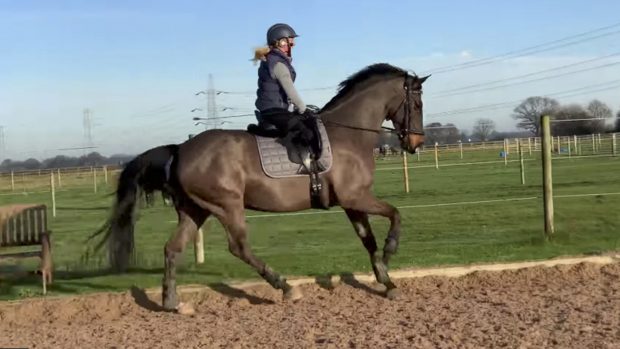Stephanie Cameron’s 15-year-old advanced horse Huntcliffe Marshall tends to lose all forward movement in his flying changes, coming to almost a complete stop. He also throws his head in the air and was late to change behind.
Stephanie was holding the horse and inadvertently making him stop, so I advised her to “think medium” before the changeand count “one, two” before asking for it, to help with her own timing.
He was also anticipating and dropping his inside shoulder, which makes it impossible to change in front and behind. Stephanie had always ridden across the diagonal from marker to marker and Marshall would get to the centre line and start backing off.
The first step was to improve his canter, which was too long, almost four-time and lacking in energy. When you tried to make him more energetic, he became hollow.
I did a lot of work lengthening and shortening the canter and performing canter pirouette and riding forward out of that. This was to get him “sitting” more on his hind end and more balanced and to quicken the tempo to the correct three-time.
When doing flying changes, it is important to be straight, so varied exercises prevented him guessing what was next.
These included counter canter with shoulder-in to get him to relax and go in a new direction; riding across the diagonal with his body straight but with a counter canter bend, not allowing him to guess the change and asking him to continue in counter canter; and riding across the diagonal straight, followed by a transition to walk.
Read Mark’s full masterclass with Stephanie and Marshall in today’s Horse & Hound (6 December 2001)


